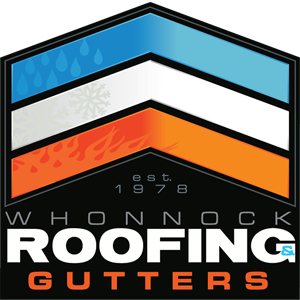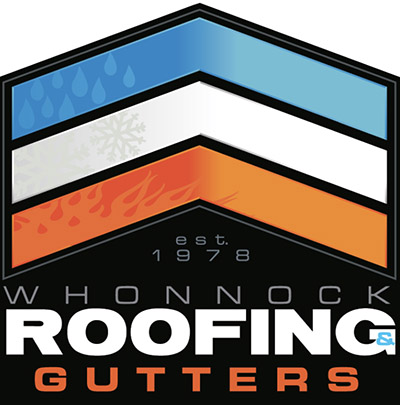Ice Dam Warning!
Winter is certainly here in the Lower Mainland, and in true Vancouver fashion, it is soon to be followed by a rapid melt and rain!
With this freezing weather comes the potential for ice dams to form on your roof. Ice dams are a serious issue that can cause extensive damage to your roof and home. In this blog post, we’ll discuss ice dams, how they form, the damage they can cause, and what you can do to prevent them.
Ice dams are a ridge of ice that forms along the edge of a roof. They are caused by melting snow that flows down the roof and then refreezes at the edge. The result is a ridge of ice that prevents melting snow and ice from draining off the roof. This can lead to backups of water that can eventually leak into the house, causing damage to the roof, walls, insulation, and other areas.
The leading cause of ice dams is inadequate ventilation and insulation in the attic. When the attic is not adequately ventilated, warm air from the house gets trapped in the attic and warms the roof. This causes snow to melt, which runs down the roof and refreezes at the edge.
Five common causes of ice dam formation
In addition to inadequate ventilation and insulation, there are other factors that can contribute to ice dam formation. These include:
- Low roof slopes: Roofs with low pitches (2/12 or less) have a greater risk of developing ice dams because the snow is more likely to accumulate and melt on the lower edge of the roof.
- Excess snow load: If your home has an excessive amount of snow accumulation on its roof from a heavy winter storm, it can increase the chances of an ice dam forming.
- Poor attic air sealing: Poorly sealed attics allow warm air from inside your home to escape into the attic, which causes melting and refreezing at the rooftop’s edge.
- Inadequate drainage systems: Gutters clogged with debris or downspouts that don’t effectively divert water away from your home will cause water back-ups on your roof, leading to potential ice dam issues.
- Warm outdoor temperatures during winter months: When outdoor temperatures rise above freezing during winter months, it increases the chances of melting and refreezing along rooftops edges due to increased heat transfer into attics through poorly insulated ceilings and walls.
Homeowners in Vancouver and the Fraser Valley need to be aware of these five common causes when assessing their homes for potential risks associated with ice dams.
Taking proactive steps such as proper insulation and venting and ensuring gutters remain free-flowing is key in preventing costly repairs linked with this issue before they become severe enough for professional intervention.


Additionally, take a look around your neighborhood – if you notice several homes having icicles hanging off their roofs near eaves, then there may be an underlying problem caused by one or more factors as mentioned above, contributing towards the development of such situations in multiple locations simultaneously.
How to prevent ice dams from forming on your roof
The best way to prevent ice dams from forming on your roof is to ensure it’s properly insulated and ventilated. This will help keep the attic cool in the winter and prevent warm air from rising up into the attic and warming the roof, which can cause snow to melt and refreeze at the edge of your rooftop.
Additionally, it would be best to ensure all gutters are clear of debris so water can flow freely off the roof. It’s also important to check for any potential leaks or cracks around windows, doors, vents or other openings that could be allowing warm air into your attic space – these need to be sealed immediately as they may be causing melting snow on your roof.
Doing a self-inspection every few months during the winter season would also help identify potential repair needs before the situation becomes severe enough for professional attention.
Finally, take precautions such as removing excess accumulation of snow through shoveling when necessary, especially after heavy storms like we had on Tuesday have passed through area. All these measures should go a long way towards preventing costly repairs associated with ice dam formation.
How to Identify Ice Dams and Minimize Damage
If you do happen to find an ice dam on your roof, it’s important to identify the severity of the damage and take steps toward minimizing further potential damages.
The best way to identify an ice dam is by looking for long strips or ridges of packed snow and icicles that hang from your rooftop. If large amounts of water can collect in one area, then there may be a risk for flooding or seepage into the attic space. It’s also possible for shingles along eave areas to become damaged due to improper removal of ice dams – professional assistance should be sought out in such scenarios .
Solutions for Removing Existing Ice Dams
As experienced professional roofers, we recommend against using any mechanical tool, such as a shovel or ice pick to remove an existing ice dam from the roof – this can cause further structural damage and create additional safety hazards. Instead, we suggest using spikes that fit into drill bits and applying calcium chloride in areas where dams have formed. This will help reduce the size of ice dams gradually over time without causing any additional harm to the structure’s integrity. However, it is important to keep in mind that these are only temporary solutions for removing existing ice dams and are not intended as permanent fixes. Ice Dams will form again after treatment if the weather turns cold again and underlying issues remain unresolved.
Lastly, if the situation has become severe enough, then we can help address damages caused by the prolonged presence of large-scale icicles hanging off rooftops before they lead to costly repairs associated with flooding or seepage inside home.
What you need to know about assessment and repair for damaged roofs due to ice dams
It is essential to have a professional assessment of the roof and attic if you suspect that ice dams are causing damage. A qualified roofer can identify any immediate problems, such as leaks or structural issues, and advise on the best action to move forward. This could include
- further insulation to reduce heat loss and prevent future dam formation;
- replacement of damaged shingles; gutter cleaning;
- or even complete re-roofing, depending on the severity of existing damage.
If there has been water seepage into your home, this should also be checked for mold growth which can cause serious health hazards if left untreated.
In conclusion, ice dams can cause a lot of damage to your home if not taken care of properly. Ice dams form when snow and ice accumulate on the roof, preventing melting water from draining off the roof. This can lead to water damage inside the home as well as outside. If you suspect that you may have an ice dam, don’t hesitate to call us for an assessment, removal or repair. Don’t let your home suffer from ice dam damage – contact us today!

